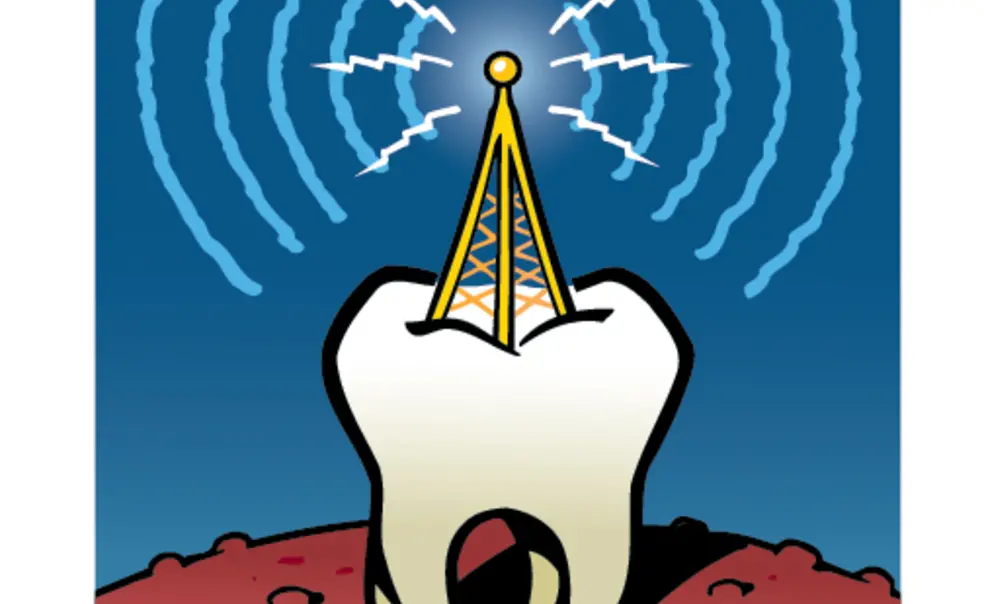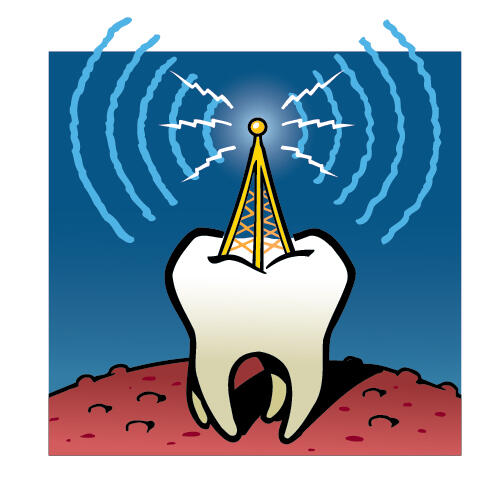BREAKING GROUND: Health alerts from a tooth tattoo
A TINY, STICKY, BIOSENSOR Michael McAlpine, assistant professor of mechanical and aerospace engineering, likes to scale down. His laboratory works on scaling down materials — a process that changes the material’s properties. The goal is to create materials that interact with the body. “We call this bio-interfacing, and the materials are nanoscale,” said McAlpine. A million nanometers fit in the period at the end of this sentence.
His laboratory is making biosensors from graphene, a single-layered carbon sheet. Many layers of graphene make up graphite, or pencil lead. But while graphite is brittle because of the way individual carbon sheets are layered, carbon atoms in a single sheet are bound tightly together, making graphene strong and flexible. “Everything changes from bulk graphite to nanoscale graphene,” said McAlpine. “It is like the difference between a tree and a piece of paper.” The electronic properties of graphene also make it useful as an electronic sensor.
McAlpine recently demonstrated that graphene can be applied to the skin or other tissue using silk. “It’s a [temporary] tattoo you slap on. The biosensor is printed on top of the silk, and you dissolve away the silk with water, leaving the graphene sensor on your skin,” he explained.
APPLICATIONS TO SINK YOUR TEETH INTO The laboratory created a tooth sensor that can detect bacteria, adding electrodes and a wireless coil so that the sensor can transmit information and be powered remotely. The sensor sticks to tooth enamel, and when bacteria bind to the peptides added to the sensor, a signal is transmitted to a remote device. The tooth sensor was featured among 32 “innovations that will change your tomorrow” in The New York Times Magazine last year.
The sensor can carry out the difficult task of detecting a single, specific type of bacterium. As soon as one bacterium gets in your body, it divides exponentially, making you sick. Detection and treatment before a full-blown infection would be a major advance. In hospitals, where bacterial infections are common, the sensor could be placed on patients or their hospital equipment. “The Holy Grail is to be able to detect diseases from saliva and breath,” said McAlpine. “The tooth comes in contact with both, so you can tailor the sensor to target different diseases.”
IN THE PIPELINE In collaboration with Princeton neuroscientists, McAlpine is using nanosensors to detect tiny mechanical deformations in individual neurons. “Our mission is to keep pushing new ideas,” he said. “We are not a bionics lab, but that is the direction I want to go in — from bio-interfacing nanomaterials to integration of biology and nanotechnology to bionics.”














No responses yet